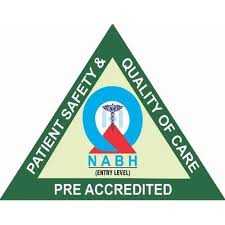In the realm of modern ophthalmology, the diversity of intraocular lens (IOL) options available for cataract surgery has expanded significantly, offering patients tailored solutions to their unique visual needs. Let’s delve deeper into the fascinating world of these advanced IOL technologies and how they can transform post-surgery vision.
Monofocal IOLs: These provide clear vision at a single focal point, usually for distance vision. Generally optimized for distance vision, they can significantly enhance your ability to see far-off objects in sharp focus. However, it’s important to note that monofocal IOLs don’t address near or intermediate vision. For tasks like reading or viewing a computer screen, you might still need glasses.
Multifocal IOLs: These IOLs have corrective zones built into the lens, similar to bifocal or trifocal eyeglasses. This allows you to see both near, intermediate and far objects, thus reducing/eliminating the need for glasses post surgery.
Accommodating IOLs: These lenses are designed to move slightly within the eye, allowing for some focus adjustment and potentially reducing the need for glasses. These IOLs have not demonstrated their utility consistently hence have not become popular with Ophthalmologists and patients alike.
Toric IOLs: These are used to correct astigmatism and provide clear vision for patients with pre-existing astigmatism. They are available in monofocal, multifocal & trifocal.
Extended Depth of Focus (EDOF) IOLs: These lenses provide an extended range of vision, reducing the need for glasses for both near and distance vision.
Aspheric IOLs: These specialized lenses are designed to improve image quality and reduce visual aberrations, especially in low-light conditions. Most mid range IOL options have an aspheric design.
Blue Light Filtering IOLs: These lenses incorporate a filter to reduce exposure to blue light, which some believe may help protect the retina from potential damage. Most imported Monofocal IOLs have a built-in blue light filter.
It’s important to consult with an eye care professional to determine which intraocular lens option is best suited for your individual needs and eye health. In the midst of this array of IOL choices, the guidance of an eye care professional becomes invaluable. Consulting with an ophthalmologist is paramount to determine which intraocular lens aligns with your individual needs and eye health. Their expertise and insights ensure that the chosen IOL will optimize your visual experience after cataract surgery. As technology continues to advance, the world of IOLs keeps evolving, promising more precise, personalized, and transformative visual outcomes for patients.
Before choosing an IOL, it is important to answer a few questions
- Are you a frequent night driver?
Ans. If night driving is important, you might want to steer clear of multifocal or EDOF lenses. Side effects such as glare, halos around lights or loss of contrast can happen. This is especially true at night or in dimly lit places. Most people adapt to these effects, but those who drive at night are a lot happier with monofocal IOLs.
2. Do You Have Other Eye Conditions?
Ans. Multifocal and EDOF lenses are generally not recommended for people with vision loss from glaucoma, macular degeneration or other eye diseases. These IOLs divide total light entering the eye so they can actually make things worse for people with vision loss. If avoiding glasses is important and you have eye damage, monovision may be a better option where quality of vision will be preserved.
3. Do you have a set budget?
Ans. Multifocal and EDOF IOL’s are not covered in most insurance schemes, making it essentially an out-of-pocket expense. Some of the Indian multifocal IOL options can be explored if budget is not high.
Call Now at 0120-2481481, 2480480 +91 88003 13134 or email us at info@visionplus.net.in.
Book an Online Appointment: https://visionplus.net.in/contact/

